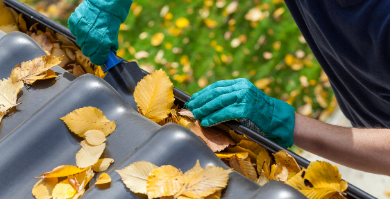3 Types of Flood Damage Cleanup Denver Faces in the Next Year
Flood Damage Cleanup Denver Style
When it comes to flood damage cleanup Denver confronts some daunting challenges. Lifelong or longtime Front Range residents probably don’t need a primer on the seasonal risks for various types of flooding.
But for newer residents joining the community, and even for some more seasoned residents, we believe it could be helpful to share some cautions and lessons we’ve learned about winter and early spring flood damage over the years.
In addition to alerting you to flood and water damage threats that arrive with dramatic changing Front Range seasons, we want to share safety tips for your family, employees, customers and property.
Winter Flood Damage Threats
As we turn the corner from autumn into winter, temperatures will begin to fall quickly. Within weeks, we can expect freezing temperatures that will threaten to freeze water in pipes within buildings. Frozen pipes can rupture, flooding homes and businesses and wreaking devastation on an alarming scale very quickly. Winterizing your home or business is an important line of defense against costly repairs and headaches that can result when plumping fails and floods your property. As you prepare your property for winter, keep these tips in mind:
- Close off, insulate and protect exterior access points to your plumbing, such as pump houses, faucets, outbuildings and crawl spaces.
- Insulate exposed plumbing in crawl spaces, attics and basements.
- Test basement sump pumps for proper automatic start and operation. Consider replacing pumps in service longer than 10 years.
- Be aware of weather forecasts, noting hard freezes. Follow simple tips for freeze-proofing your home or business plumbing, including slightly opening interior faucets, keeping heating on and opening cabinets under sinks to circulate warm air to water supply lines.
- SAFETY TIP: Never attempt to thaw a suspected frozen pipe with open flame.
Spring Flood Damage Threats
Winter will inevitably yield to spring, bringing warmer weather and new threats that can result in water incursion and flood damage cleanup headaches on your property. Thawing snow in the mountains, as well as thawing frost in the ground, can raise water levels in floodplains at the same time that the soil is saturated with thawed frost, applying hydraulic pressure that pushes water into your basement. Stack a spring rainstorm on top of all this, and the water damage cleanup Denver faces can be sobering. Consider these tips when the weather begins to warm:
- Once again, test sump pumps for proper automatic start and operation. Consider replacing pumps in operation longer than 10 years.
- Ensure that water-handling features on your property are properly maintained and functioning. Clean gutters and downspouts. Ensure that downspouts channel water away from your foundation to prevent basement water incursion.
- Ensure that crawl space vapor barriers are in good repair.
Summer Flood Damage Threats
Summer on the Front Range means, believe it or not, monsoon. That’s right. Lots of sunshine occasionally punctuated by epic storms that can turn our near alpine desert into a seething floodplain in a flash. If you prepared for the spring thaws, then odds are you’re ready as you can get for any freak summer storms. But you might want to take a look at the historic flood record for your property and review your insurance coverage, just to add some peace of mind. And don’t forget that mold risk increases after periods of wet weather, even in Colorado.
The bottom line for protecting your property for the kinds of flood damage cleanup Denver confronts throughout the year is awareness and preparation. Take protective measures to help your property manage the water that unique Front Range conditions can drop or otherwise push your way, and you can avoid costly, stressful water damage cleanup headaches.




